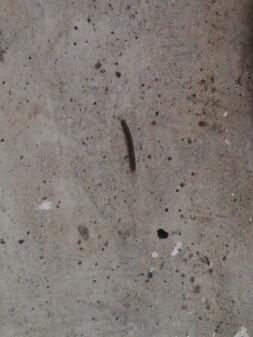There are 3 main types of earthworm; the compost worm, the earthworker worm and the root dwelling worm.
Important - composting worms are not the same as common garden worms that you dig up in the soil in your garden.
The Compost Worm
There are 4 species of compost worm. They live in the first 12 cm of topsoil on a rich diet of rotting vegetable matter, but don't eat soil. They can be found in manure heaps and leaf piles, but you won't find them in normal garden soil.
To a compost worm protozoa, bacteria and fungi are like salt and vinegar on fish and chips – delicious.
They do not build permanent burrows in their habitats, but prefer to burrow randomly through the topsoil and rotting matter.
When it's cold or really hot they will burrow deeper down and ball up, covering themselves with slime to protect themselves from drying out and hibernate to conserve energy.
There are four main species of compost worms available:
Eisenia fetida
- Common Names - Tiger worm, manure worm, brandling worm
- Colour - Rust brown with yellow stripes around it's body- just like a Tiger!
- Length - Up to 130mm
- Ideal Working Temperature Range - 15-25°
Dendrobaena venta
- Common Names - Dendras, blue noses
- Colour - Violet, purple or olive brown and sometime striped
- Length - Up to 155mm
- Ideal Working Temperature Range - 18-25°
Lumbricus rubellus
- Common Names - Redworm, bloodworm, red wiggler
- Colour - Dark red to maroon, no strips and light yellow underneath
- Length - Up to 105mm
- Ideal Working Temperature Range - 18-23°
Eisenia andrei
- Common Names - Reg tiger worm
- Colour - Dark red to purple with maybe some stripes
- Length - Up to 130mm
- Ideal Working Temperature Range - 18-23°
The Earthworker Worm
This type and the Lumbricus terrestris in particular, is the earthworm your are most likely see in your garden, busy at work tilling the soil making it more airy and nice for plants to grow in. They make long vertical burrows of up to a few feet deep, leaving their poo, known as worm casts at their entrances. They eat some soil and are particularly partial to leaves, even preferring some varies over others.
They come up to to search for food at night and Darwin, whose studies were mainly carried out on these worms found that they can even find the best shaped leaves for bunging up their burrows with.
The Root Dwelling Worm
Most of these worms are deep burrowers, inhabiting the areas around plant roots, rich with decaying roots and fungi and are widespread in farmlands. You won't see these worms, as they never venture above ground.
The squirting worm Didymogaster sylvaticus and the huge gurgling Austrailan Megascolides australis covered in the About Worms section are the more freaky examples of this type of worms. These two are extremely rare and hard to track down.

Comments
Tom, 27 February 2021
FOUND a worm in Madison, Alabama. After 2 days of sustained rain. 10-11" long, light brown, black or very dark brown head. LESS than 1/32" in diameter! (My 1" paperclip wire is 1/32 and this worm is only about 2/3 that! It leads with its black "head" just like a snake. What the heck is this thing? I do have pics and a video.
Ameerkhan, 4 December 2019
Really nice.
Alex, 17 September 2019
Thank you, this is excellent information - I've been searching for some clarification on the differences and this is really great. I'm especially interested as to whether compost worms can be found naturally in the soil in gardens, or is the only way they make their way there being if you introduce them?
Koh, 23 March 2018
Thanks , this clears my doubt. I tried many attempts to rear e-worms collected from our garden here in Malaysia and also in the US . All the failures leak me to scout for more info. Now I am not sure where to purchase the composting ones since I am in Malaysia Now. Hope another Malaysian nearby can assist.
Verry, 4 November 2013
THIS WAS VERRY HELPFUL WITH MY SCIENCE PROGECT. IT HAD EVERYTHING I WAS LOOKING 4. THE ONLY TWO THINGS WERE THAT THEY COULD HAVE PUT SOME MORE INFORMATION . THE INFO. WAS LIMITED. IF YOU GO ANEYWARE ELSE THER IS SOMPTHING NOT WHAT UR LOOKING 4 IT WILL ALWASE B SOMETHING OR THE OTHER. THE OTHER THING WAS THAT IN THE EARTHWORKING PARAGRAPH THEY SAID 'LEAVING THEIR POO ' WHY COULDNT THEY SAY ' LEAVING THEIR MANUER' LIKE IN THE COMPOST WORM PARAGRAPH THEY SAID ' THEY CAN B FOUND IN MANUER HEAPS. BUT OTHER THAN THAT THIS WAS AWSOME.